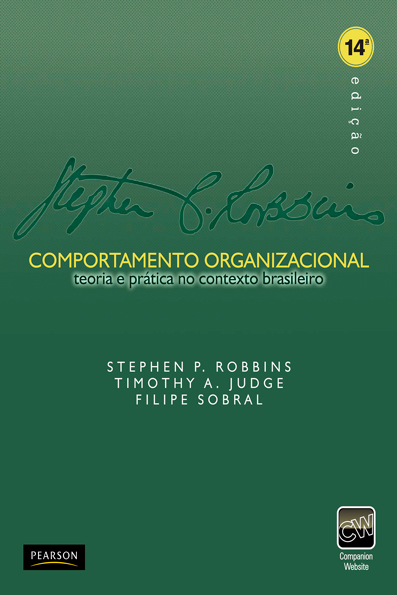
Content organized by Valéria Feitosa de Moura from the book Comportamento organizacional, published in 2010 by Pearson Prentice Hall.
The link between emotional intelligence and creativity
In this course we already learned that emotional intelligence and creativity are related. Now, we are going to deepen our knowledge on the subject, as creativity is one of the extremely relevant skills in the context of changes and innovation that we are experiencing. To begin the subject, let's better understand what creativity is and how it can be developed. Next, we'll look at how a study has shown its relationship to emotional intelligence.
Creativity can be understood as the capacity that an individual has to invent, innovate and create in any area. Creativity is considered an important aspect of human intelligence and is a competency increasingly required by organizations. Do you think you're creative? Do you want to improve your creativity? Kamanchek (2013) presents 12 steps that help you in this task:
Creativity can be linked to other phenomena of people's personality. Some studies have shown that people who have both positive and negative moods have more creativity than people who have only one type of mood. Furthermore, other studies have shown that several facets of emotional intelligence can predict markers of creativity (GEHER; BETANCOURT; JEWELL, 2017). Geher, Betancourt and Jewell (2017), for example, showed that the empathic accuracy facet of emotional intelligence can positively predict creativity, that is, identifying whether a person is empathetic can help identify whether he/she is creative. This can be explained by the fact that the ability to know the feelings of others can generate the ability to create products that others find fun.
Let's get to know now, a study presented by Wilkinson that analyzed 250 employees at all hierarchical levels of two organizations in the public services sector. The researchers used a form of analysis called hierarchical regression analysis. They wanted to discover the relationship between emotional intelligence and creativity and, for that, they used a validated tool to measure emotional intelligence called the Wong Emotional Intelligence Scale (WEIS). WEIS is a scale based on the four dimensions of ability described in the domain of emotional intelligence:
Although the tool for measuring emotional intelligence is not the same as the one we present in the course, we can verify the similarity between the evaluated dimensions and the dimensions of emotional intelligence that we studied.
The study resulted in a number of findings. First, he demonstrated that there is a positive and significant relationship between emotional intelligence and creativity at work. However, this is not a direct relationship, i.e. emotional intelligence = creativity. Researchers found that emotional intelligence tends to lead to creativity if two conditions are present. What are those conditions? It is necessary that the individual has a “proactive” personality and that the organizational climate is favorable.
Let's start by introducing what a proactive personality is. Most surveys and tools, like the MBTI for example, are based on the "big 5 personality traits". However, a "proactive personality" is like a hidden gem. It has been shown to be closely related to a number of factors such as business success, for example. The 6 dimensions of a proactive personality are:
Another study, published in the journal Human Relations in 2012, already found that individuals with a proactive personality were significantly more likely to 'create' their own work (increase the scope and function of their work, build better structural work resources and and increase their work challenges) compared to people who had a more passive personality.
The other important condition for emotional intelligence to impact creativity is the organizational climate. According to the study, the organizational climate needs to:
With this, the study concludes that there is a link between creativity and emotional intelligence if the individual has a proactive personality and the work environment supports this. Both conditions need to be present.
In this class you learned that creativity is the ability of an individual to invent, innovate and create in any area. Creativity is considered an important aspect of human intelligence and is a competency increasingly required by organizations. You also learned about several tips on how to develop your creativity, such as breaking rules, having a notebook, not being afraid to make mistakes, spending time away from your computer and cell phone, trying something different and resting. Finally, you learned that emotional intelligence and creativity are related and that this relationship is positive when the person is proactive and the organizational climate is favorable.
Taika Waititi explains why the mood is the key to creativity. Watch the Ted Talk on the subject.
Link: https://bit.ly/3lN6ZvM Accessed on: December 09, 2020.
Bibliographical
References
GEHER, Glenn; BETANCOURT, Kian; JEWELL, Olivia. The link between emotional intelligence and creativity. Imagination, Cognition and Personality, v. 37, n. 1, p. 5-22, 2017.
KAMANCHEK, Amanda. 12 maneiras de aumentar a criatividade. Exame, 2013. Disponível em: <https://bit.ly/31hi7HT>. Acesso em 09 dez. 2020.
WILKINSON, David. Is there a link between emotional intelligence and creativity? [20??]. Disponível em: <https://bit.ly/3f7kANa> Acesso em: 09 dez. 2020.
Resilience and Emotional Inteligence - REI501 - 4.4
The link between emotional intelligence and creativity
Images: shutterstock

Reference Book:
Comportamento organizacional
ROBBINS, Stephen P.; JUDGE, Timothy A.; SOBRAL, Filipe.
Pearson Prentice Hall, 2010.